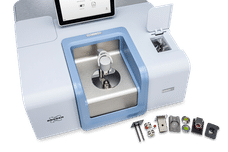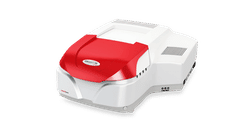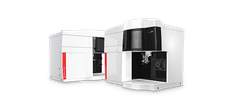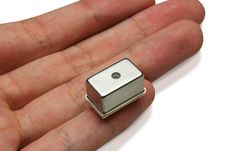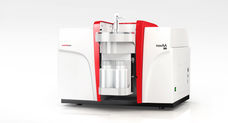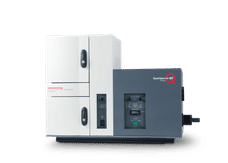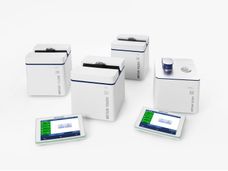Easy detection of materials
Low-cost, mobile near-infra-red spectrometer provides information about different substances
Sugar or sweetener? Cotton or wool? Fake or genuine? At first glance, the average consumer finds it hard to tell the substances that food or textile products actually contain. Equipment which uses infra-red measurement to identify materials can provide quick answers to these questions, though. Such equipment is otherwise known as a spectrometer. spectrometers are equipped with sensors and use invisible infra-red radiation to provide information about a variety of substances which are found, in clothing, plastic packaging and food, for instance. The disadvantage of these devices is that they are relatively expensive and not therefore affordable for most people. However, as part of a bachelor’s dissertation together with student Arne Kulinna, Prof. Dr. Artem Ivanov, has recently developed a mobile spectrometer which is very inexpensive in comparison with those currently available on the market.
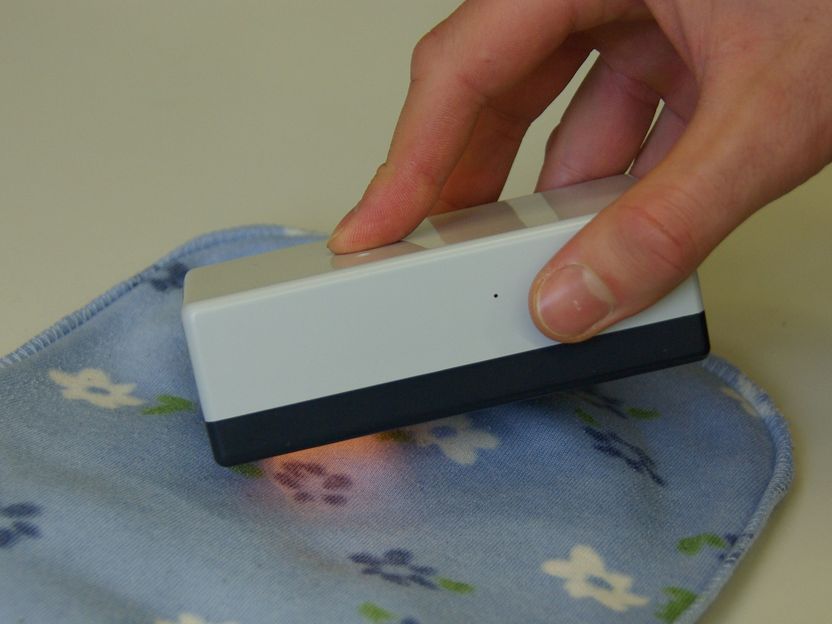
With the help of this handy spectrometer, it is possible to determine the material of a particular product.
Landshut University of Applied Sciences
A low-cost prototype
While the professor created the hardware, Kulinna designed the necessary software, which controls the measurements and sends the data via Bluetooth. He has also developed an app which displays the measured data on a PC or smart-phone. “Most spectrometers currently available on the market cost around 2,000 to 3,000 Euros. To enable their widespread use, they will have to become significantly less expensive,” explains Ivanov. The system which he has designed as a one-off gadget together with Kulinna, only costs around 300 Euros, in comparison. “We were also able to achieve a signal quality that in some respects exceeds that of the module of the sensor manufacturer,” reports Ivanov, gladly. In the initial step, the two researchers developed a prototype which displays the different spectra. The team uses these to identify the specific substances.
The development continues
In the next step, a more detailed evaluation has been planned. There are likely to be more dissertations on the hardware at the university, for example. The device is also going to serve as a platform for project work so as to advance the topic of data analysis and classification. The system can also be rolled out to other spectral ranges by combining several sensors and with the use of adapted software.
Quick, mobile, straightforward
“Our ultimate goal is to be able to make conclusive statements about the authenticity of products or the condition of food,” says Ivanov. With the help of this inexpensive mobile device, it would then be possible to quickly and easily determine whether a silk blouse is actually made of pure silk or viscose, whether sugar or sweetener has been used in certain foods, and what kind of plastic a yoghurt pot is made from. “Identifying different types of plastic could also make the subsequent sorting during the recycling process easier, for example,” Ivanov reflects. The professor is convinced: “There is a lot of potential in this area – at both the technological and social levels. This is an area in which we have a lot of work to do with our students.”
These products might interest you
See the theme worlds for related content
Topic World Spectroscopy
Investigation with spectroscopy gives us unique insights into the composition and structure of materials. From UV-Vis spectroscopy to infrared and Raman spectroscopy to fluorescence and atomic absorption spectroscopy, spectroscopy offers us a wide range of analytical techniques to precisely characterize substances. Immerse yourself in the fascinating world of spectroscopy!

Topic World Spectroscopy
Investigation with spectroscopy gives us unique insights into the composition and structure of materials. From UV-Vis spectroscopy to infrared and Raman spectroscopy to fluorescence and atomic absorption spectroscopy, spectroscopy offers us a wide range of analytical techniques to precisely characterize substances. Immerse yourself in the fascinating world of spectroscopy!





















